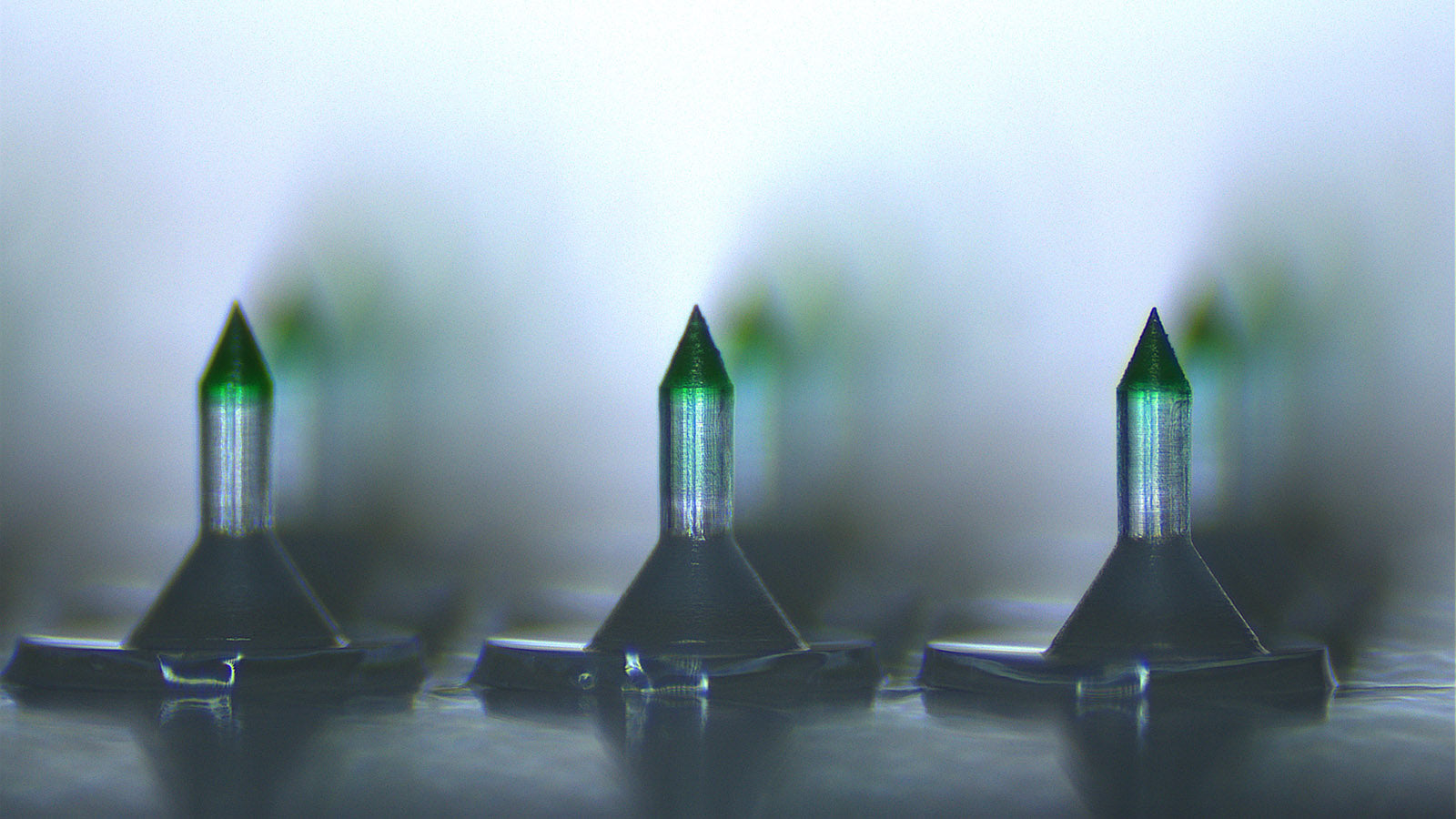These days, we're always looking for the latest and greatest ways to look our best. Two beauty treatments getting a lot of buzz are microneedle patches and cosmetic injections like Botox. While they both promise to help fight signs of aging, there are some key differences between the two. This article breaks down everything you need to know about microneedle patches versus injections. We'll cover how they work, what concerns they treat, the pros and cons of each, and which one might be the better option for you. With all the facts laid out, you can decide for yourself if you want to go the high-tech microneedle route or stick to the classic injections. Either way, you'll be an informed consumer ready to put your best face forward.
Cosmetic Injections: A Traditional Method
Injectable treatments have been used to fight wrinkles and aging for decades. Good ol' Botox and dermal fillers were some of the first cosmetic procedures to become super popular and mainstream.
Botox is probably the most well-known injectable treatment out there. It uses a form of botulinum toxin to temporarily relax the facial muscles that cause lines like crow's feet and frown lines. Instead of relaxing muscles, it adds volume under the skin to plump up wrinkles and restore youthful fullness to areas like the cheeks or lips.
For Botox injections, the solution gets injected into targeted areas to block the nerve signals telling those muscles to contract. No contraction means no wrinkle! Dermal fillers take a more straightforward approach - the gel-like solution literally gets injected right into wrinkles and hollow areas to physically fill them out from underneath. Botox results typically last 3-4 months while most fillers keep you smooth for 6 months to a year before needing touch-ups.
People dig injections because you can see a noticeable difference pretty quickly with very little downtime. But they do require repeating the pricey treatments every few months. There's also the risk of minor side effects like bruising, swelling, or headaches. And let's not forget the potential for that unmistakable "frozen" look if you go overboard with Botox.

Microneedle Patches: The High-Tech Solution
If injections seem a little too invasive for your taste, microneedle patches offer a much easier, high-tech way to get anti-aging ingredients into your skin. This cutting-edge technology uses thousands of teeny tiny needles to create microscopic openings in the top layer of your skin. Don't worry - they're so small you can't even feel them going in!
What Can They Do?
These advanced patches can tackle a variety of aging issues like fine lines, wrinkles, uneven tone and texture, dullness, dryness, and even a loss of firmness. The tiny needles allow potent anti-aging ingredients to penetrate deeply into your skin in a way that creams and serums can't.
Application Made Simple
Using a microneedle patch couldn't be easier. After cleansing your face, you just stick the patch on the area you want to treat and leave it for several hours. During that time, the mini needles slowly release hardworking ingredients directly into your skin. When you peel it off later, the teeny micro-channels close right up on their own.
The Potential Advantages
Fans of microneedle patches rave about how easy and relatively painless they are to use compared to injections or treatments done at a clinic. There's minimal downtime and iritation after using them. Plus, the precise ingredient delivery may even help boost collagen production over time for firmer, smoother skin. Not too shabby for something you can do at home!
The Possible Disadvantages
On the downside, microneedle patches can be pricier upfront than some skincare products. And for best results, you'll likely need to use them consistently long-term. There's also a small risk of irritation or sensitivity.
While more research is still emerging, microneedle patches offer a innovative, low-hassle way to take your anti-aging routine up a notch with high-tech precision.

Microneedle Patches vs Injections: What's the Better Option?
The Application Process
For the actual application, microneedle patches and cosmetic injections are like night and day.
Injections require making an appointment, going to a medical office, and having a professional administering a series of injections with a needle into your face. It's an in-office procedure that may cause discomfort during the injections.
Microneedle patches, on the other hand, can be applied at home. After cleansing your face, you simply stick the patch on and leave it for several hours while the tiny needles gradually deliver ingredients into your skin. The process is virtually painless.
Comparing the Results
So how do the results of these two methods compare? Both can be effective for treating common signs of aging, but they work in different ways.
Injections like Botox work by temporarily paralyzing facial muscles to reduce the appearance of wrinkles. Dermal fillers add volume underneath the skin to smooth out lines and restore youthful contours.
Microneedle patches take more of an "inside out" approach by delivering anti-aging ingredients like vitamins, peptides, and hydrators deep into the skin over time. This aims to improve multiple signs of aging including fine lines, dullness, and loss of firmness.
The end results can look quite similar in terms of a smoother, more rejuvenated appearance. But injections tend to work faster while patch results build gradually with consistent use over several months.
Weighing the Pros and Cons
Both options have their advantages and disadvantages to consider:
- Injections offer visible results quickly but require repeat treatments every 3-6 months. They also carry minor risks like bruising or headaches.
- Patches have little downtime or side effects, but results take longer to develop. The upfront cost may be higher than some creams.
Your choice may come down to your specific aging concerns, desired results, budget, and personal preferences around convenience and any aversion to needles. Be sure to consult professionals to understand all your options.

Don't Believe the Hype: Myths vs. Facts
There's a lot of misinformation and confusion out there surrounding microneedle patches and cosmetic injections. Let's separate fact from fiction:
Microneedle Patch Myths
Myth 1: The needles are painful and damage your skin.
Fact: The needles are microscopic and don't cause pain or lasting skin damage. Any redness is temporary.
Myth 2: Patches just push ingredients into your skin without absorbing.
Fact: The needles create temporary microchannels that allow optimized absorption and delivery of beneficial ingredients.
General Misconceptions
Misunderstanding 1: At-home treatments can never match professional results.
Truth: While professional cosmetic treatments are more intensive, at-home devices like microneedle patches can provide visible anti-aging benefits gradually over time.
Misunderstanding 2: You have to choose one treatment or the other.
Truth: Many people use microneedle patches in between injectable treatments to maintain and extend their results.
Separating hype from facts is key when considering any cosmetic procedure or product.
Weigh Your Options for a Customized Anti-Aging Approach
For microneedle patches versus cosmetic injections, there's no one-size-fits-all solution. Injections give you faster results but require repeat appointments and carry a minor risk of side effects like bruising. Patches provide a gentler approach you can do at home, though you'll need to be patient and consistent to see full results over time. The upfront cost can also be higher than basic creams and serums. Many people actually use both - getting injections for an initial boost, then maintaining those results longer with patches between appointments. At the end of the day, the "better" option depends on your specific aging concerns, budget, and personal preferences around convenience and needles. Discuss all the facts with your dermatologist to develop an anti-aging plan customized for you.







Leave a comment
All comments are moderated before being published.
This site is protected by hCaptcha and the hCaptcha Privacy Policy and Terms of Service apply.